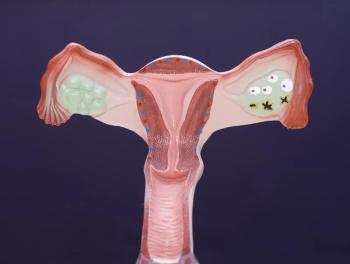
Sorafenib Offers Survival Improvements in Ovarian Cancer
Sorafenib combined with topotecan and then continued as maintenance therapy offered a significant improvement in survival outcomes in women with platinum-resistant ovarian cancer.
Sorafenib combined with topotecan and then continued as maintenance therapy offered a significant improvement in survival outcomes in women with platinum-resistant ovarian cancer, according to a new study.
“Traditionally, disease relapsing within 6 months of completion of platinum therapy was classified as platinum-resistant or platinum-refractory ovarian cancer, representing a population with a particularly poor prognosis,” wrote study authors led by Radoslav Chekerov, MD, of Charité–Universitätsmedizin Berlin in Germany. Previous research has shown that angiogenesis inhibition could be effective in this setting.
The new TRIAS trial randomized a total of 174 patients with platinum-resistant ovarian cancer to receive either sorafenib plus topotecan (85 patients) or placebo plus topotecan (89 patients); after 6 cycles, patients received either sorafenib or placebo for up to 1 year as maintenance therapy. The results were
Patient characteristics were well balanced between the groups; most patients had received one or two prior lines of chemotherapy, and most had an ECOG performance status score of 0 or 1.
After a median follow-up period of 10.0 months, progression-free survival (PFS) was significantly improved with sorafenib. The median PFS was 6.7 months in the sorafenib group, compared with 3.7 months with placebo, for a hazard ratio (HR) of 0.60 (95% CI, 0.43–0.83; P = .0018). After completion of chemotherapy, 42% of sorafenib patients received a median of 1.6 months of maintenance therapy, and 38% of placebo patients received a median of 1.4 months of maintenance treatment.
Most of the deaths in the study were due to disease progression, which the authors noted suggests that PFS is a meaningful outcome. Still, overall survival (OS) was also improved with sorafenib. The median OS was 17.1 months with the study drug compared with 10.1 months with placebo, for an HR of 0.65 (95% CI, 0.45–0.93; P = .017). A multivariate analysis found that sorafenib treatment and International Federation of Gynecology and Obstetrics (FIGO) stage were significant predictors of PFS; for OS, the significant predictors included sorafenib treatment, FIGO stage, and age.
The incidence of serious adverse events in the trial was similar between the two groups (59% of sorafenib patients and 51% of placebo patients). The most common serious adverse events with sorafenib included abdominal pain (10% vs 5% with placebo), dyspnea (7% vs 4%), and neutropenia (7% vs 3%). The only grade 3/4 adverse events occurring more frequently with sorafenib than placebo were leukopenia, hand-foot skin reaction, and other dermatologic symptoms.
“To our knowledge, TRIAS is the first trial to show statistically significant improvements in both PFS and OS with maintenance antiangiogenic therapy after combination with chemotherapy for platinum-resistant ovarian cancer,” the authors wrote. “These findings provide further support for the clinical effect of antiangiogenic agents in ovarian cancer, and suggest that maintenance strategies warrant further investigation in platinum-resistant ovarian cancer.”
Newsletter
Stay up to date on recent advances in the multidisciplinary approach to cancer.





















































































